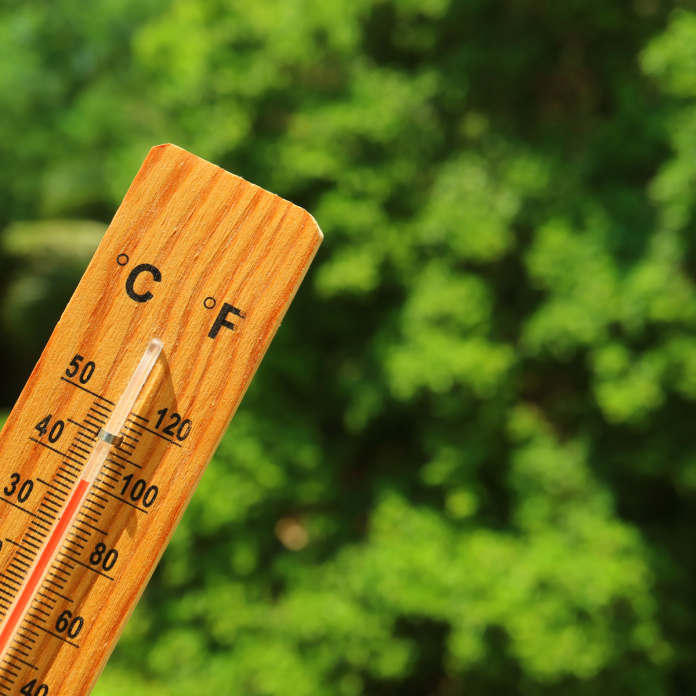In this article, Tom Garrigan, technical director at BSRIA explains how climate change and extreme heat in homes are changing the way that buildings need to perform in the future
The recent weather pattern in the UK replicated across much of Europe with record temperatures that have been attributed to the cause of death of hundreds if not thousands of people whilst sparking wildfires across the continent. The U.S. is now similarly experiencing a heatwave with extremely high temperatures for much of the population.
The frequency, intensity, and duration of future heatwaves are uncertain; however, the UK has experienced record high daily maximum temperatures three times this century, in part due to global temperatures rising because of climate change.
Building stock and ventilation systems have been put to the test in recent adverse weather
Building stock and the ventilation systems within them have been severely tested during the latest heatwave. As ambient temperatures subside to more bearable levels, it is a good time to reflect on the performance of our buildings and the effect they have had on their occupants following the first red extreme heat warning issued by the Met Office across parts of the UK earlier in July.
Over the last two years, much of the attention has been focused on assessing the performance of ventilation systems and adapting the ventilation strategies to reduce the risk of airborne pathogens such as SARS-CoV-2.
BSRIA’s multi-tiered Ventilation Verification Service (VVS) continues to play a critical role in supporting these activities, which include measuring system ventilation rates and carrying out CO2 gas tracer tests to calculate decay rates and ventilation effectiveness, along with monitoring CO2 levels in occupied spaces.
With working from home becoming the norm for many over the pandemic, offices were either partially occupied or completely empty with the demand for heating and cooling required for thermal comfort purposes substantially reduced or removed altogether.
The demand for cool indoor space has significantly increased
Fast forward to this July and ventilation systems have not only had to supply the ventilation rates required to reduce the risk of airborne transmission but also to ensure good thermal comfort for the occupants, in this case through cooling the indoor ambient air.
In densely populated urban areas, the demand to cool this indoor space significantly increases as tall buildings, roads and other infrastructures absorb more sunlight and re-emit as heat over time. This phenomenon is called the “urban heat island” and is exacerbated by the use of air-conditioning equipment expelling hot air from the building.
As individuals differ, it is impossible to specify a thermal environment that will satisfy everyone; however, dissatisfaction can be caused by unwanted heating or cooling of only one part of the body, known as local discomfort.
Thermal comfort can be quantified using two methods; the perception of the environmental conditions by occupants and carrying out measurements of the environmental conditions to calculate thermal comfort indices.
How can BSRIA measure building conditions?
A survey can provide building owners and facilities managers with qualitative information about the perceived impact building services have on the wellbeing of building occupants. The BSRIA Occupant Wellbeing (BOW) survey is an online or paper-based survey tool designed to assess occupant satisfaction and wellbeing. It measures the building’s physical environment, indoor facilities, functionality, and accessibility.
BSRIA can also measure the as-found conditions and/or introduce heat loads to simulate occupied conditions. Specialist instrumentation allows the calculation of thermal comfort indices for comparison with published acceptable ranges. The ability to measure and calculate the expected thermal comfort indices prior to and at a range of conditions allows for acceptability testing of the occupied space.
The distraction caused by adverse thermal comfort can be significant and lead to occupants feeling the space is uncomfortable even if/when the conditions in the space have improved. Perceived long-term thermal discomfort can be hard to dispel, and views can become biased if occupants feel a space is too hot, too cold, stuffy, or draughty without action being taken.
It is increasingly important to consider the thermal comfort of occupants in the face of challenging weather patterns, as poor thermal comfort can adversely affect people’s health and productivity.
Through surveys supported by physical measurements, informed decisions can be made to achieve optimal comfort while maximising energy efficiency.
Tom Garrigan
Technical director
BSRIA














